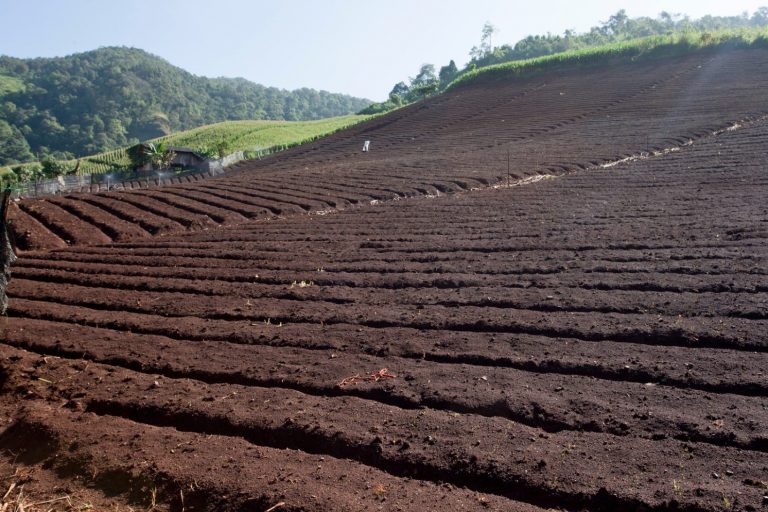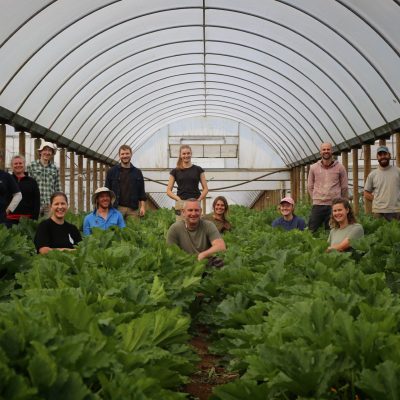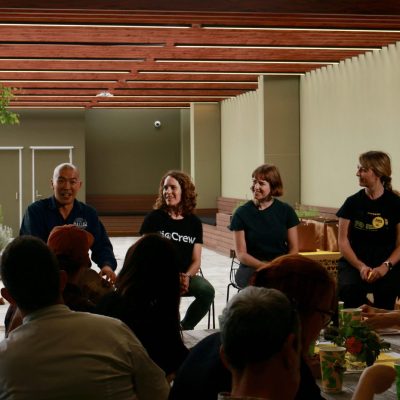Soil is one of the most essential natural resources on earth. We literally couldn’t live without it! 95% of the world’s food comes from the stuff right under our feet! Did you know that soil health relates directly to the quality of our food? This precious resource supplies our food-producing plants with their necessary nutrients.
Why is healthy soil important?
To have nutrient-dense food, we need healthy soil. If the soil is unhealthy, the plant will be too, and our bodies won’t get the necessary nutrients either. It’s like the saying “happy wife, happy life”, except it’s “healthy soil, healthy humans”.
Unsustainable farming practices can affect the nutrient density of our food. Nutrients are our holy grail. They are in the foods we eat every day that make our bodies function properly and healthily. For example, that carrot you had for dinner last night will soon become part of the building blocks for the cells in your eyes. Aren’t our bodies just so cool!?
The alarming fact? The nutrient level in our food has declined in the last few decades, including essential minerals such as iron, zinc, calcium, vitamin C and many more. For example, a study called “Still No Free Lunch” by food and agriculture expert Brian Halweil found that a person would have to eat 21 oranges to get the same nutrients as one orange from the 1950s.
What makes up healthy soil?
We are what we eat and we’re also what our food eats! Therefore, ensuring the soil is healthy and contains necessary air, water, minerals, and organic matter is critical. An abundance of organic matter, including dead or decaying plant and animal matter, generally improves soil health. The more living and dead organisms, the better!
For example, an average handful of soil contains over 50 billion life forms! Here at Suncoast, we do our part to maintain soil biodiversity by recycling food waste into organic fertilisers through Phoenix Power. Organic fertilisers increase organic matter instead of inorganic/synthetic fertilisers that kill these life forms.

We also work with many farmers and producers that are working towards greater sustainable practices and doing their bit for the environment. Helen and Bruce Hill are a perfect example! They operate an Achacha Farm in Ayr at Palm Creek Plantation near Giru, North Queensland. Instead of working against the environment, they work with it. They do this by steering clear of nasty chemicals and sprays at their farm. Instead, they have created highly nutrient-dense soil, including cow manure, grounded eggshells (an awesome source of calcium) and many other minerals like sea kelp. Not only does it keep crops insanely healthy, but it also keeps away unwanted pests! You can read more about Helen and Bruce’s farm here.
Another farmer we work with is Buck from Buck’s Farm in New South Wales. Buck grows a large variety of native produce on his farm, which is essential to preserve biodiversity and healthy soils. You can learn even more about natives here.
Can soil reverse climate change?
David Perry, the CEO of Indigo Agriculture, believes that capturing and storing atmospheric carbon in soils is a scalable, affordable and immediate solution to reduce and reverse the effect of climate change.
So how does it all work? Plants capture carbon dioxide through photosynthesis and use it to build their stems, leaves and roots. The remaining carbon then gets released deep within the ground. And what’s better? Soil LOVES carbon: it is a win-win! It is a key component of soil organic matter and soil structure. Carbon-enriched soils also have great resilience in floods, which our farms could really use right now!
How can we capture more carbon in soil?
These regenerative agricultural practices have the potential to store a large portion of carbon into the soil while also improving the nutrition in our food!
- Plant cover crops to increase biodiversity
- Avoid tillage as it disrupts soil structure, causing erosion
- Use cattle and residue grazing to increase biodiversity
- Increase organic matter (dead plant matter and animal faeces)
Soil is a natural source of removing carbon dioxide from the atmosphere that is readily available. However, it’s clear that soil alone will not solve climate change. Still, if the Kardashians stop flying their private jets around and we reduced our carbon emissions while taking care of our soil, there is real hope to be able to bend the arc of climate change. Additionally, healthy soil is essential to producing nutrient-dense food and fibre. In the wise words of Franklin D. Roosevelt, the nation that destroys its soil destroys itself.
So, let’s all work together to look after our beloved soils to ensure we get maximum nutrients out of our food. While also protecting our planet by buying sustainable produce from our farmers and us!
References
Franklin D. Roosevelt. (1937). “The Nation that Destroys its Soil…” a Letter from the President. Retrieved from the Soil Carbon Coalition: https://soilcarboncoalition.org/learning/FDR-INVESTIGATION.pdf
Stacey Cook. (2019). The solution to climate change is just below our feet. Retrieved from National Geographic: https://www.nationalgeographic.com/science/article/partner-content-solution-to-climate-change-below-our-feet#:~:text=While%20the%20amount%20of%20carbon,the%20effects%20of%20climate%20change
Richard Gray. (2019). Why soil is disappearing from farms. Retrieved from BBC: https://www.bbc.com/future/bespoke/follow-the-food/why-soil-is-disappearing-from-farms/
U.S. Department of Health and Human Services. (2017). Your Digestive System & How it Works. Retrieved from the National Institute of Diabetes and Digestive and Kidney Diseases: https://www.niddk.nih.gov/health-information/digestive-diseases/digestive-system-how-it-works#:~:text=The%20small%20intestine%20absorbs%20most,intestinal%20lining%20into%20your%20bloodstream.
David Montgomery & Anne Bikle. (2021). Soil Health and Nutrient Density: Beyond Organic vs. Conventional Farming. Retrieved from Frontiers: https://www.frontiersin.org/articles/10.3389/fsufs.2021.699147/full
David Perry. (2021). Farmers could help solve the climate crisis—we just don’t invest in them. Retrieved from Quartz: https://qz.com/1714282/regenerative-agriculture-could-radically-impact-climate-change/
Department of Agriculture, Fisheries and Forestry. (2022). National Soil Package. Retrieved from the Australian Government:https://www.agriculture.gov.au/agriculture-land/farm-food-drought/natural-resources/soils#:~:text=Australia%20ancient%20soils%20that%20are,management%20of%20our%20fragile%20soil
Brian Halweil. (2007). Still No Free Lunch: Nutrient levels in U.S. food supply eroded by pursuit of high yields. Retrieved from The Organic Center: https://ucanr.edu/datastoreFiles/608-809.pdf





